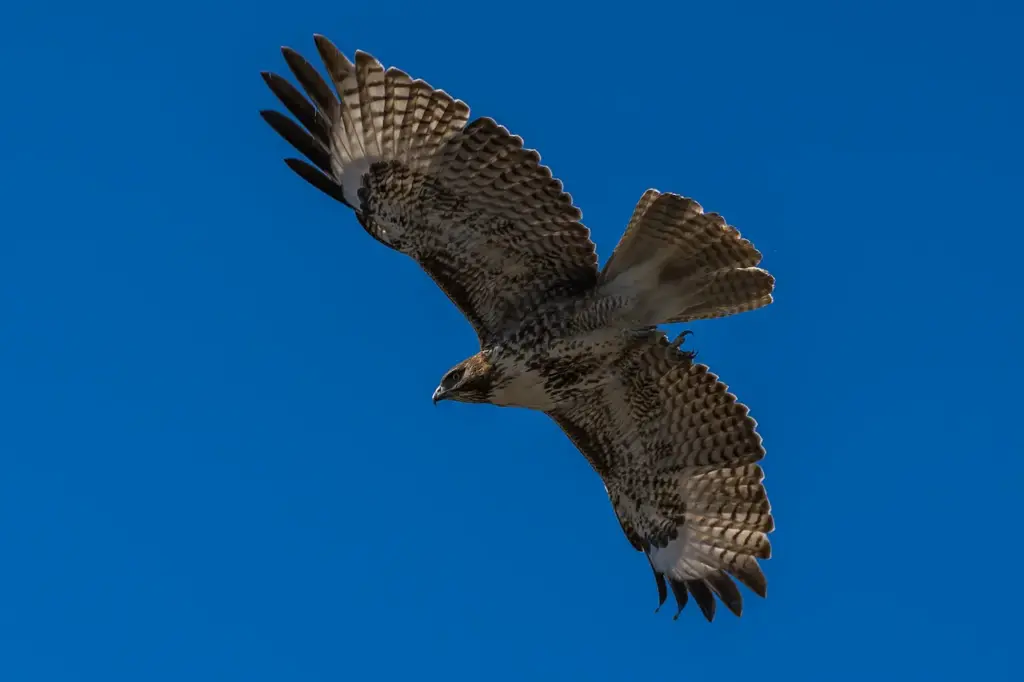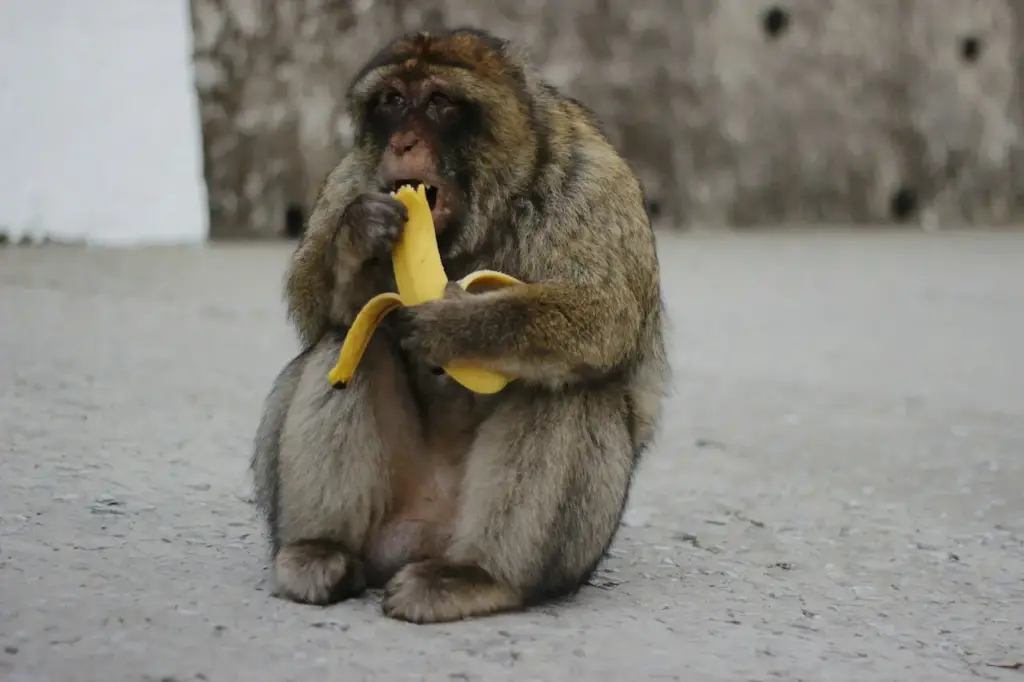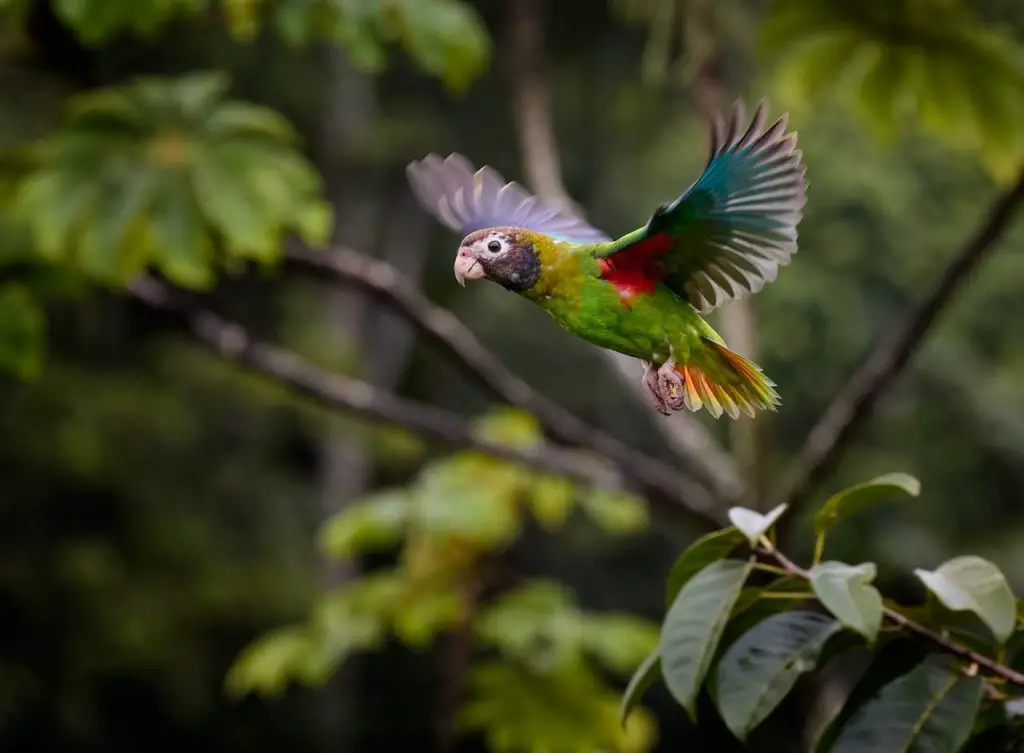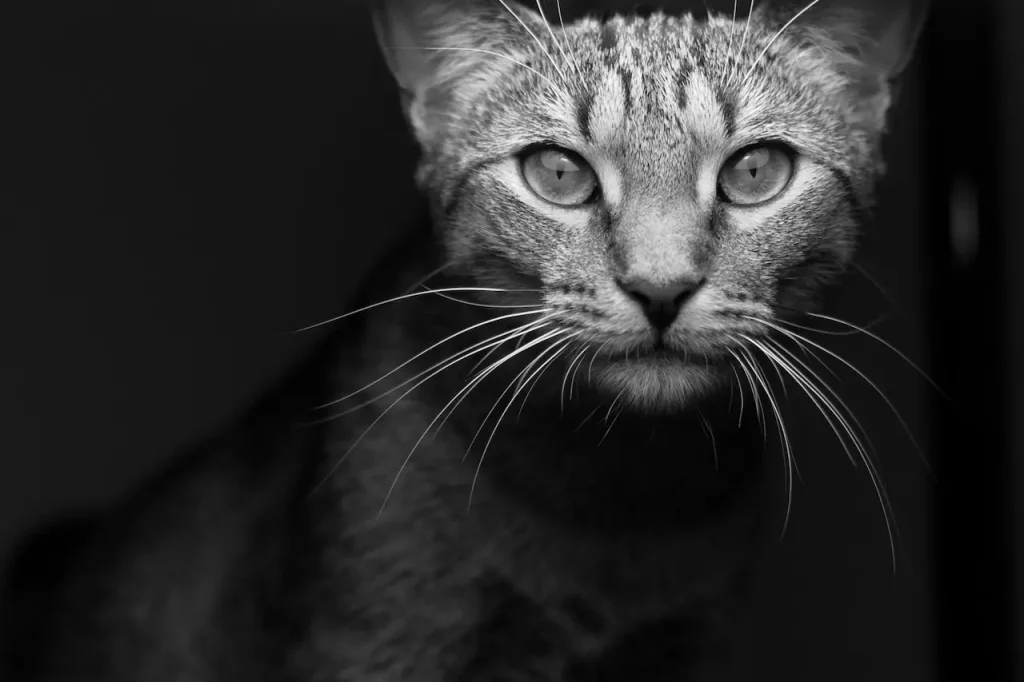What Eats A Parrot?
Categories
- Accipitridae (1)
- Acrididae (1)
- Algae (2)
- Alligatoridae (1)
- Amoebidae (1)
- Amphibians (3)
- Anatidae (1)
- Anguillidae (1)
- Arachnids (2)
- Bears (2)
- Big Cats (3)
- Birds (13)
- Bovidae (5)
- Bufonidae (1)
- Camelids (1)
- Cameras (1)
- Canines (13)
- Caridea (1)
- Carnivora (10)
- Castoridae (1)
- Cats (5)
- Cebidae (1)
- Cephalopod (1)
- Cervidae (2)
- Cetacean (1)
- Chondrichthyes (1)
- Crocodilia (2)
- Crustaceans (4)
- Culicidae (1)
- Cyaneidae (1)
- Dasypodidae (1)
- Dasyurids (1)
- Deer (1)
- Delphinidae (1)
- Desktop (1)
- Didelphidae (1)
- Dinosaurs (1)
- Dogs (13)
- Dolphins (2)
- Echinoderms (1)
- Education (10)
- Elephantidae (1)
- Equine (1)
- Erethizontidae (1)
- Erinaceidae (1)
- Farming (1)
- Felidae (5)
- Fish (5)
- Food Chain (31)
- Food Web (2)
- Formicidae (1)
- Frugivore (1)
- Gaming (1)
- Gastropods (1)
- Giraffids (1)
- Great Apes (2)
- Health Conditions (3)
- Herbivore (4)
- Hi-Fi (1)
- Hippopotamidae (1)
- Hominidae (1)
- Insects (10)
- Invertebrates (2)
- Keyboards (1)
- Laptops (1)
- Leporidae (1)
- Mammals (23)
- Marsupials (4)
- Mephitidae (1)
- Microchiroptera (1)
- Mollusks (2)
- Mongoose (1)
- Muridae (1)
- Nocturnal Animals (1)
- Odobenidae (1)
- Omnivore (2)
- Phasianidae (1)
- Phocidae (1)
- Plankton (1)
- Plants (2)
- Primate (1)
- Ranidae (1)
- Reptiles (7)
- Rhinocerotidae (1)
- Rodents (5)
- Salamandridae (1)
- Scarabaeidae (1)
- Sciuridae (2)
- Sharks (1)
- Shellfish (1)
- Sound (1)
- Spheniscidae (1)
- Suidae (1)
- Superfamily Papilionoidea (1)
- Theraphosidae (1)
- What Eats (5)
Parrots are found in all the world’s tropical rain forests. Those same forests are also home to creatures that eat parrots.
The main predators, or natural enemies, of parrots are birds of prey, such as hawks, owls and eagles, and large snakes such as pythons and boa constrictors.
Snakes grab parrots when they are resting on tree branches, while birds of prey attack them when they are flying as well as when they are at rest.
The black eagle of Asia often attacks and eats parrots and other birds when they are in their own nests!
Monkeys also eat parrot eggs and baby parrots whenever they can find them.
As for the question of what a parrot eats—parrots eat a variety of fruits, nuts and seeds.
Table of Contents
ToggleIntroduction
So what eats a parrot? Due to their brilliant plumage and exceptional intellect, parrots talk to us with their little chirps and mimic human speech. These marvels of the air beautify the sky in many different parts of the world. Living with parrots is fun but challenging in some perspectives, as many predators threaten these endearing birds.
In this article, we’ll explore the complex interactions that illustrate parrots’ lives and learn what feeds and protects them. Living among their predators, such as hawks, snakes, monkeys, and mongooses, parrots deal with a complicated dance of adaptation and resilience in order to survive.
Join us on a journey into the fascinating society of these enticing birds, where their vibrant colours and cunning behaviours reveal a world of fascination and survival strategies.
Predators of Parrots
In their native environments, parrots encounter a wide range of predators, including animals, reptiles, and birds of prey. Now, let’s examine some of the most frequent predators of parrots and their interactions with these incredible birds in more detail.
1. Hawks And Eagles
As some of the most adept and potent predators in the great sky, hawks and eagles rule supreme. These predatory birds oppress their victims, especially parrots, with their powerful claws and acute vision.
Hawks are skilled hunters who can take down parrots in the air and on the ground. They are recognised for their quick and graceful flying. Hawks engage in laser-like attention when they locate their prey, evaluating the environment and timing their attack to perfection. They leap down with a sharp acceleration, their talons extended, intending to kill their unsuspecting victim with deadly accuracy.
Parrots are considerably more endangered to eagles’ magnificent and imposing presence, which can fly far farther. Solid and persistent, these aggressive predators frequently hunt more oversized prey like monkeys and small animals. But when the chance presents itself, eagles seize on weak parrots, using their strong paws to seize and conquer their victim quickly.
When it comes to catching parrots, hawks and eagles have difficulties despite their remarkable hunting abilities. These vibrant birds can identify and avoid dangers due to their keen vision and agile movements, making them difficult to stop. Furthermore, parrots frequently form big flocks that offer protection in numbers and make it harder for lone predators to identify specific targets.
However, the long-running conflict between hawks, eagles, and parrots still rages in their kingdom, with each species depending on its unique advantages and tactics to survive. Remember the crucial function these majestic birds of prey play in preserving the delicate balance of nature’s ecosystems, even as we admire their beauty and might.

A Red-tailed Hawk Flying What Eats Hawks
2. Mongooses
A cunning predator waits in the thick underbrush of tropical jungles, waiting to strike its unwary prey. Known for their quickness and cunning, mongooses are robust predators with sleek bodies and keen jaws. Although they are more frequently linked to hunting rodents and snakes, mongooses may be dangerous to parrots in some areas.
These tiny predators can identify parrots in the thick undergrowth due to their excellent hearing and sense of smell. With reflexes like lightning, they leap toward their target, depending on surprise and quickness to take their attacker by surprise. Even though parrots can fly, mongooses are determined hunters who use their quick reflexes to cut through the dense underwood to reach their victims.
After capturing a parrot, mongooses use their strong teeth to bite their prey to death, killing it before it can flee. Although lone mongooses may not seriously threaten adult parrots, they harm the more susceptible nestlings and baby birds.
Mongooses are essential to the delicate dance between predator and prey in the wild because they keep the ecosystem in balance. They regulate the numbers of birds and small animals to help regulate ecosystems and avoid overpopulation. However, their prey on parrots reminds us of these vibrant birds’ difficulties in their environments.
3. Monkeys
An agile and opportunistic predator, monkeys rule the abundant shade of tropical woods. Some species of monkeys consume parrots as part of their diet despite the fact that they may be more recognised for their friendly and playful habits.
With their keen sense of touch and razor-sharp teeth, monkeys can catch and eat a wide range of food, including parrots and other birds. From the shade above, monkeys observe their surroundings, wiping the foliage for indications of activity or movement.
Monkeys are quick to respond when they see a parrot within reach. They move through the branches with lightning speed, precisely closing in on their target. With a rapid bite, they quickly kill the unwary parrot by snatching it off its branch with their powerful hold and deft fingers.
Although fruits, leaves, and insects are the primary sources of food for monkeys, the chance to catch a parrot offers a priceless supply of protein and other nutrients. However, the fact that monkeys prey on parrots also emphasises the intricate relationships that exist in tropical ecosystems, where each species has a distinct function in maintaining the fragile balance of nature.

Monkey Eating a Banana
4. Feral Cats
Feral cats are seriously threatening parrots in urban and rural areas. Originating from domestic cats, these cunning predators have adapted to live in the wild and are excellent hunters of tiny birds, such as parrots.
Feral cats use their acute senses and agility to follow their prey with care and accuracy, ambushing unsuspecting birds as they feed or roost. While parrots can fly and take cover in trees, wild cats can move through heavy foliage by climbing, jumping, and foraging to get their prey.
Parrots cannot frequently protect themselves from the cat’s cutting fangs and claws upon being captured. Globally, feral cat populations have expanded and threaten many native bird species, including parrots.
Efforts should be made to manage wild cat populations and protect eagle habitats to minimise predators’ impact on parrot populations and ensure long-term survival.
5. Snakes
With their forked tongues searching the air for traces of food, snakes cautiously crawl through the tangle of plants of forests and jungles. Even though they lack limbs and wings like other predators, snakes are excellent hunters who can take down a wide range of prey, including parrots.
Snakes identify parrots in their environment using their acute sense of smell and heat-sensing pits. They creep stealthily toward their unsuspecting victim, coiling their bodies and getting ready to attack. When the time is perfect, they charge forward at an extremely fast speed, inserting their poisonous teeth into the parrot’s skin.
Some snakes utilise compression to conquer their prey, while others use poison to render their victims unconscious. Whatever their attack mode, snakes are alarming predators that can quickly overcome even the most elegant parrots. After grabbing the parrot, the snake uses its strong jaws to consume the bird as it slowly swallows its food.
Even though snakes can be dangerous, parrots have their defence mechanisms against predators, such as being alert and hiding in the canopy’s protection. However, the fear of snakes is a continual reminder of parrots’ difficulties in their environments.
6. Ferrets
Ferrets threaten parrots, agile and opportunistic predators that mainly target birds that nest or roost in low foliage or holes in the ground. Because of their slim bodies and strong claws, ferrets can navigate through dense vegetation and tunnels in quest of prey.
With predatory readiness, ferrets may prey on eggs, chicks, or adult parrots, attacking nests or roosting locations. Unlike parrots, which can make loud warning cries and protect their nests, ferrets are determined hunters who can avoid natural defences and attack unsuspecting prey.
Ferrets may significantly affect parrot populations in areas where they are found, mainly if they are introduced or given the freedom to grow in an uncontrolled manner. The long-term survival of these enchanting bird species in their native environments depends on implementing effective management techniques that lessen the threat posed by ferrets to parrots.
The Strategies They Adopt For Survival
Parrots have various survival techniques to help them survive in their harsh surroundings. Let’s examine some of the most essential strategies parrots employ to avoid the hazards in their natural environments.
Flocking Behaviour
Like many other bird species, parrots engage in a fascinating phenomenon called flocking. This indicates that they assemble in big groups of a few, hundreds, or even thousands. For parrots, flocking behaviour provides various functions, including group protection. Parrots can increase their chances of spotting hazards early by compiling their collective senses to keep a lookout for potential predators.
Furthermore, predators may need help identifying specific prey due to the many birds in a flock. The ability of parrots to communicate, forage, and roost together is another social benefit of flocking. This behaviour is an essential survival tactic developed throughout time to support parrots in various environments.
False Appearance Tactics
Parrots are experts at tricking predators with their deceitful behaviour. Certain species have complex colouring and patterns that assist them in blending in with their environment and reduce their visibility to possible predators.
Certain animals have evolved to replicate the sounds or movements of more terrifying creatures, such as predatory birds, to scare off predators. By adopting this deceptive look strategy, parrots can avoid notice and lessen their vulnerability to predators. Parrots use imitation and concealment to illustrate how resourceful and adaptive they can be when faced with danger, showing the extraordinary variety of survival techniques in the animal world.
Agility
Well known for their skill and ability to do aerial nimbleness, parrots are vital to their ability to avoid predators. Parrots can fly up at a moment’s notice or move quickly through dense foliage due to their mighty wings and light bodies. They can bypass slower predators and avoid danger because of their quick reflexes and fast spins.
Parrots rely on their agility when rushing through the canopy or avoiding obstacles in flight to keep one step ahead of any attackers. This incredible capacity demonstrates the versatility and tenacity of these wise birds in their struggle for existence.
Vigilance
A defining characteristic of parrot behaviour is constant alertness since these observant birds constantly scan their environment for dangers. Parrots examine their environment for danger indicators, including potential predators, using their incredible sense of vision and acute awareness. They utilise alarm cries and other vocalisations to warn their flock mates of the presence of predators and enable them to take evasive action. Parrots are alert and prepared to react to any possible threat when feeding on the ground or sitting high in trees.
Parrots use this acute awareness as a critical survival tactic to help them deal with the difficulties presented by their changing surroundings.
Nesting Strategies
Parrots use clever techniques to protect their young from predators while building their nests. Certain species lay their eggs in burrows or tree hollows, shielded from hawks, eagles, and other aerial predators. Others construct intricate nests high in the canopy, out of the reach of predators that live on the ground, such as snakes and animals.
Parrots may also select nesting locations close to water or thick foliage, offering them more protection against predators. In a world of possible threats, parrots ensure their young survive and are secure by carefully choosing their nesting sites and building solid nests.
What Do Parrots Eat?
Parrots are omnivores, consuming various foods like fruits, seeds, and insects. Let’s examine what foods parrots eat and how they get food in the wild.
Fruits And Seeds
Many parrot species love fruits as a dietary source since they are rich in vitamins, minerals, and antioxidants. Fruits such as apples, oranges, bananas, grapes, and mangoes are among the many fruits that parrots eat. They enjoy the juicy, sweet taste of ripe fruits, which helps keep them hydrated.
Parrots eat various plant seeds, including safflower, millet, and sunflowers. These seeds provide parrots with the energy they need to maintain their busy lifestyles since they are high in lipids and proteins.
Berries And Flowers
Berries and flowers are known for their sweet, rich tastes, which parrots particularly like. They eat a lot of berries, blackberries, raspberries, blueberries, and strawberries, and they love the natural sugars and luscious pulp of these berries.
In addition to being tasty, berries give parrots vitamins and antioxidants that help strengthen their immune systems. Furthermore, parrots may indulge in flower nectar and pollen, especially those with rich hues and heady fragrances. In addition to giving vital nutrients and water, flowers like sunflowers, hibiscus, and dandelions provide parrots with a nectar-rich food supply.
Vegetables And Greens
A healthy diet includes various greens and vegetables for parrots to eat. Rich in vitamins and minerals, leafy greens like Swiss chard, kale, and spinach offer vital ingredients for general health.
Furthermore, crisp veggies like carrots, bell peppers, cucumbers, and zucchini may appeal to parrots. These veggies support parrots’ general health by providing them with vital nutrients, fibre, and water. To provide their feathery companions with a more varied and varied diet, some parrot owners also provide cooked veggies as a healthy treat.
Nuts And Grains
Another significant part of a parrot’s diet is wild and grains, which provide vital lipids and minerals. Because of their powerful beaks, parrots can break through tough shells and get nutrient-rich kernels. Almonds, walnuts, pecans, and peanuts are popular nut varieties for parrots.
Furthermore, parrots may eat raw grains or mix them into bird seed mixes, including rice, oats, wheat, and maize. These grains provide parrots fibre and carbs, which improves their general health and well-being.
Insects
Even though they are primarily herbivorous, several parrot species include insects in their diet, particularly while nesting or bringing up petite chicks. Parrots can consume various insects, such as ants, termites, caterpillars, and beetles. They capture and eat these high-protein prey items using their keen beaks, which supply vital nutrients for development and growth.
Final Words
Parrots are extraordinary and adaptive creatures who successfully navigate a world full of chances and obstacles, making them stand out in the complex web of nature. These vibrant birds have developed flocking behaviour, false appearance, agility, vigilance, and nest buildings to help them survive in spite of dangers from many predators, from aerial to ground.
Understanding the dynamics of the predator-prey relationship and parrots’ food preferences helps us better understand their place in the environment.
Parrots represent the delicate balance of nature and the extraordinary ways they have evolved to flourish in their natural habitats through their tenacity and inventiveness. These remarkable birds’ critical contributions to the biodiversity of our world and the complex web of life they are a part of are appreciable, along with their beauty and persistence.


